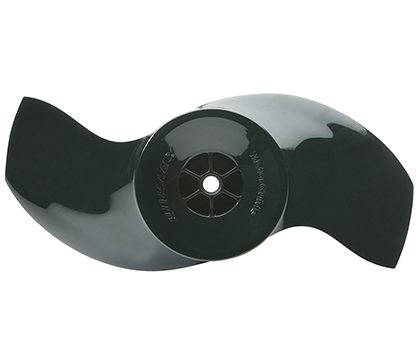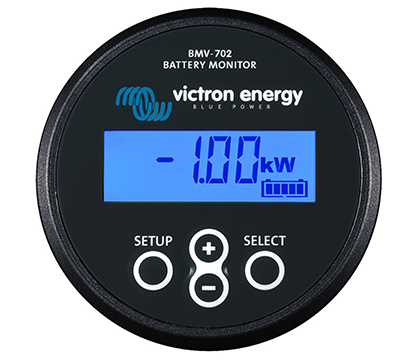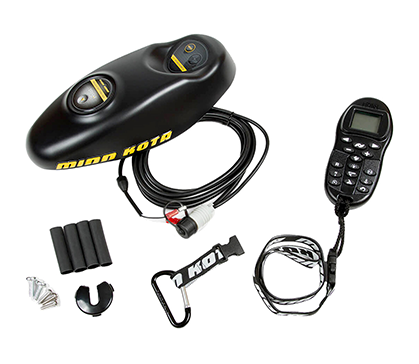Trolling Motor Power Considerations
Powering your trolling motor is more than flipping a switch—it’s about setting it up correctly to keep your boat running smoothly. Whether heading to that perfect fishing spot or keeping a steady pace as you cast, having the right power makes a difference to your fishing experience.
Learn what factors impact your motor’s performance, from choosing the appropriate trolling motor battery to managing power efficiently. With the right power setup, you’ll maximize your time on the water and ensure every trip is successful.
Thrust and Trolling Motor Power
Thrust, measured in pounds (lbs), gives your trolling motor the power to move your boat. Think of it like horsepower in a car—it’s about pulling strength, not speed. The right amount of thrust keeps your boat steady, even when dealing with strong winds or currents, without putting too much strain on the motor.
Trolling motors come in three main voltage systems: 12V, 24V, and 36V. Each system provides different levels of thrust and battery life, making them suitable for various types of boats and fishing needs:
- 12V systems. 12V systems are ideal for small boats and kayaks, offering up to 55 lbs. of thrust. They’re easy to install with just one battery, making them cost-effective. But remember that their power and runtime are limited, making them best for shorter trips or calmer waters.
- 24V systems. Ideal for medium-sized boats, these motors provide 55-90 lbs. of thrust. They run on two batteries connected in series, giving you more power and longer runtime. This setup is perfect for extended fishing trips and can easily handle moderate water conditions.
- 36V systems. Built for larger boats, these motors deliver 80-115 lbs. of thrust. With three batteries, they offer maximum power and efficiency, making them ideal for rough waters and extended fishing trips without the hassle of frequent recharging.
What Affects Your Power Needs?
Before settling on your trolling motor rig, you need to consider a few key factors that can influence the amount of power you’ll need, such as:
Boat Size and Weight
When selecting trolling motor power, the most important consideration is the size and weight of your boat. Larger, heavier boats need more thrust to move smoothly through the water and stay in control. Generally, you should aim for about 2 lbs. of thrust for every 100 lbs. of your fully loaded boat. Here’s a quick reference for how much power you need:
- Up to 1,500 lbs: 30-40 lbs. thrust
- 1,500-2,500 lbs: 40-55 lbs. thrust
- 2,500-3,500 lbs: 55-70 lbs. thrust
- 3,500-4,500 lbs: 70-85 lbs. thrust
- Over 4,500 lbs: 85+ lbs. thrust
Remember to account for gear, fuel, and passengers when calculating your boat’s total weight.
Water Conditions
Where you fish also impacts the power you’ll need. On calm, sheltered lakes, less thrust will do the job. But if you’re venturing into open waters with wind and waves or navigating rivers with strong currents, you’ll need more power to maintain control and ensure safe navigation.
If you fish in challenging conditions, consider a motor with more thrust than recommended. This ensures you’re ready for anything the water throws at you.
Fishing Style and Techniques
Your fishing style determines the power needed from your trolling motor. If you’re trolling for extended periods or constantly adjusting your boat’s position, you’ll require more power and battery life than if you’re just making quick adjustments. Here’s a closer look at how different fishing techniques and targeting specific species impact your power needs:
- Bass fishing. Angling for bass requires lots of short, strong movements to access heavy weed lines, submerged trees, and docks where these fish wait to ambush their prey. You’ll want moderate thrust with high maneuverability to stay on the move and react quickly.
- Trout or salmon. A higher thrust motor is essential for trout and salmon fishing to maintain consistent speed, especially in strong currents and variable conditions. These fish respond better to steady bait presentation, and the extra power helps you counteract wind, waves, and current, keeping your boat on course. This ensures your lure stays in the strike zone, increasing your chances of success.
- Crappie fishing. Crappies are often found in specific spots like around submerged structures, brush piles, or drop-offs. You’ll need a lower thrust motor with precise control to make fine adjustments to access the best fishing locations and avoid spooking the fish.
Wind and Current Factors
Strong winds and currents can quickly push your boat off course, making it challenging to stay in position. A more powerful motor allows you to push back against these forces, letting you focus on fishing instead of constantly making adjustments. If you’re in areas with unpredictable weather or strong tides, opting for more thrust will ensure you’re prepared to handle whatever comes your way safely.
Calculating the Right Power Level
When choosing the right power level for your trolling motor, keep these factors in mind to ensure you have the power you need for your fishing conditions:
- Thrust-to-weight ratio. Start with 2 lbs. of thrust per 100 lbs. of boat weight. For a 3,000-lb. boat that means at least a 60 lb. thrust motor. If you often fish in windy or strong currents, consider upgrading to a 70-80 lb. motor for better control.
- Voltage and battery configuration. When it comes to voltage and batteries, higher voltage systems like 24V or 36V give you more power but need more batteries.
Consider the environments where you typically fish and opt for a motor that can handle the most challenging conditions. It’s always better to have extra power than to struggle with an underpowered motor.
Trolling Motor Power and Battery Considerations
Picking the right battery for your trolling motor is critical to making the most of your fishing adventures. Take a look at the four main types of marine batteries you might want to consider:
- Flooded Lead Acid (FLA) batteries are traditional and affordable. They are easy to find but require regular maintenance, like topping up water levels.
- Absorbed Glass Mat (AGM) batteries are maintenance-free and spill-proof. AGM batteries are a reliable choice and handle vibrations better than FLA batteries.
- Gel are sealed, maintenance-free batteries that excel in high temperatures but are more sensitive to overcharging.
- Lithium batteries are the latest in marine technology, offering the best power-to-weight ratio and the longest lifespan. Though pricier upfront, their durability and performance make them a smart long-term investment.
It’s essential to consider battery life or capacity when calculating the power needs of your trolling motor. Motors with higher thrust typically draw more amps, impacting battery life. Battery capacity is measured in amp-hours (Ah), showing the number of amps a battery can provide over a certain period. To estimate potential runtime, use this formula:
Runtime (hours) = Battery Capacity (Ah) / Motor’s Amp Draw
For example, a 100 Ah battery powering a 25-amp motor should provide about 4 hours of runtime. However, the reality is often different. Higher voltage systems are more efficient, and since most anglers don’t run their motors at full speed all the time, you can usually get more runtime than this calculation suggests. Variable speed use, environmental conditions, and battery health also impact actual performance.
Proper charging and maintenance maximize battery life. Use a smart charger compatible with your battery type to avoid overcharging and potential damage. Regularly check your battery connections for corrosion and keep them clean and secure to ensure efficient power transfer and prolong the life of your battery.
Performance Enhancements To Increase Power
Boosting your trolling motor’s performance can make your fishing trips even better. A few simple upgrades can go a long way in improving control and efficiency. Here are some to consider:
Upgrading Propellers

Upgrading to a premium propeller is an excellent option for a direct boost in performance. The MotorGuide Katana 2 Prop, with its high-efficiency, low-drag design, can increase your motor’s thrust by up to 30% compared to standard props. And if you often fish in weedy areas, the Minn Kota Weedless Wedge 2 Prop is ideal, featuring a swept-back design that effectively clears vegetation.
Using Battery Monitors

Monitoring your battery in real time is vital to managing your power effectively. The Victron BMV-712 Smart Battery Monitor from FISH307 instantly updates your battery’s voltage, current, and remaining capacity. This helps you avoid unexpected power loss and keeps your motor running at its best throughout your trip.
Software and GPS Integration

Upgrading with advanced software and GPS can turn your trolling motor into a high-tech fishing tool. For example, the Minn Kota i-Pilot system lets you navigate with precision and automated control, so you can set waypoints, follow contours, and hold your fishing position effortlessly. With the i-Pilot, you can focus more on catching fish and less time worrying about steering your boat.
Power Your Fishing Adventures With FISH307
Ready to power your fishing adventures with the perfect trolling motor battery setup? FISH307 has everything you need, from trolling motors and battery management systems to accessories and professional advice.
Got questions? We can help you find the perfect trolling motor battery to power up your fishing adventures. Your best days on the water start with the right gear—get in touch with us now to make it happen!
Recent Posts
-
Ice Fishing Safety 101: What Every Angler Needs To Know
Ice fishing offers a unique thrill, but safety should always come first. Knowing the basics of ic
-
Ice Fishing Season Prep: Your Essential Pre-Ice Checklist
When the lakes start freezing, it’s time to swap your boat for an ice auger. But before you hit the




